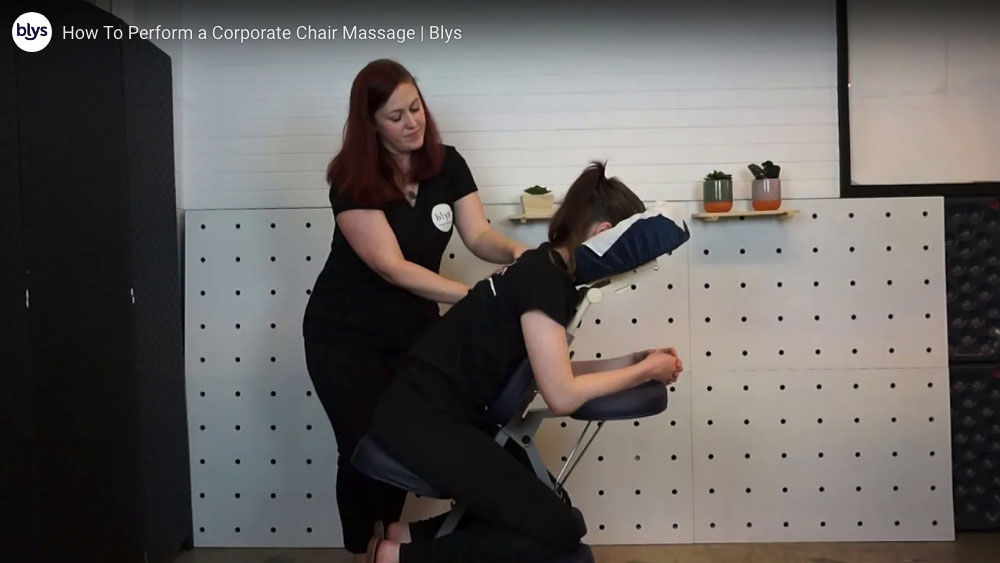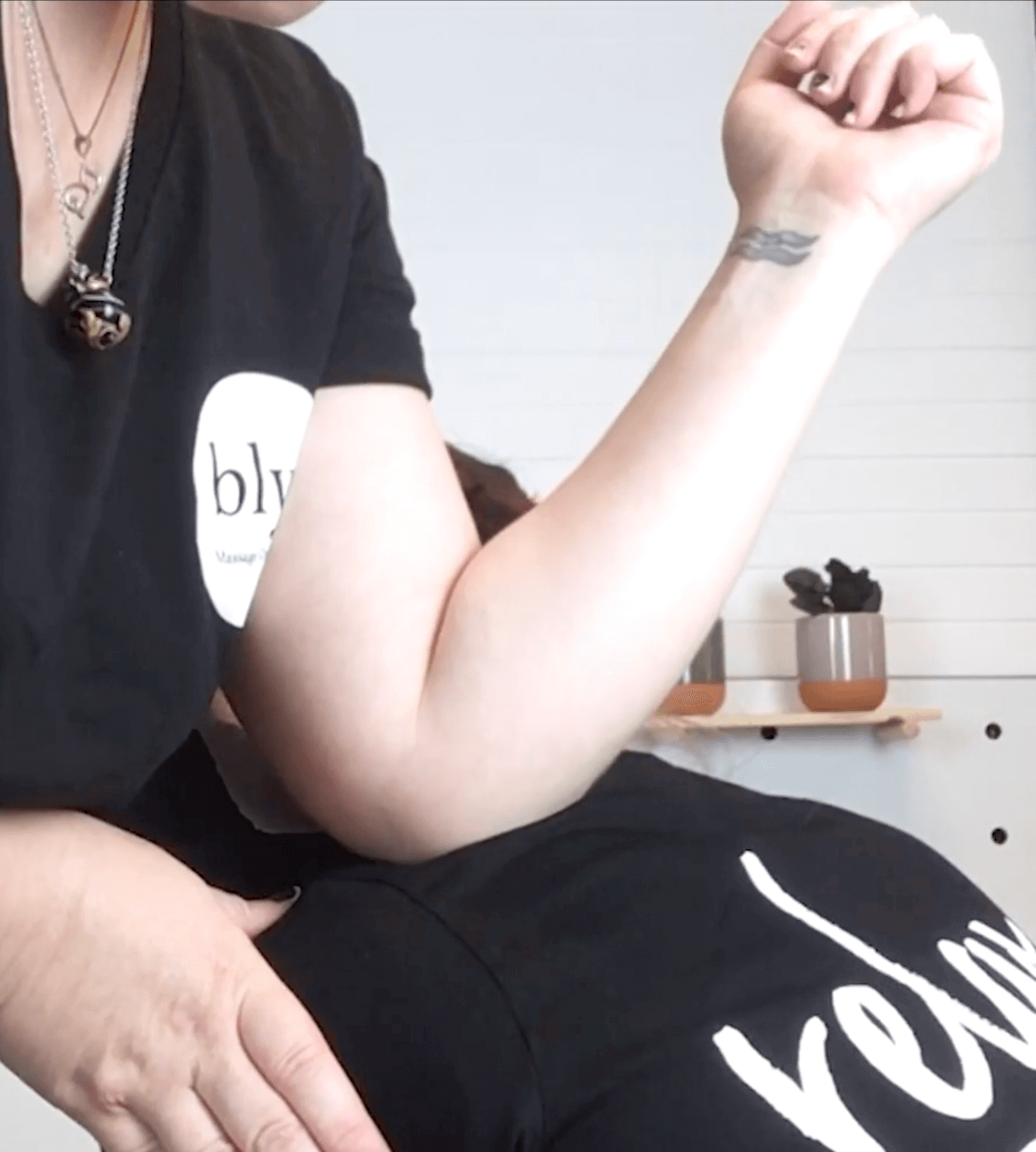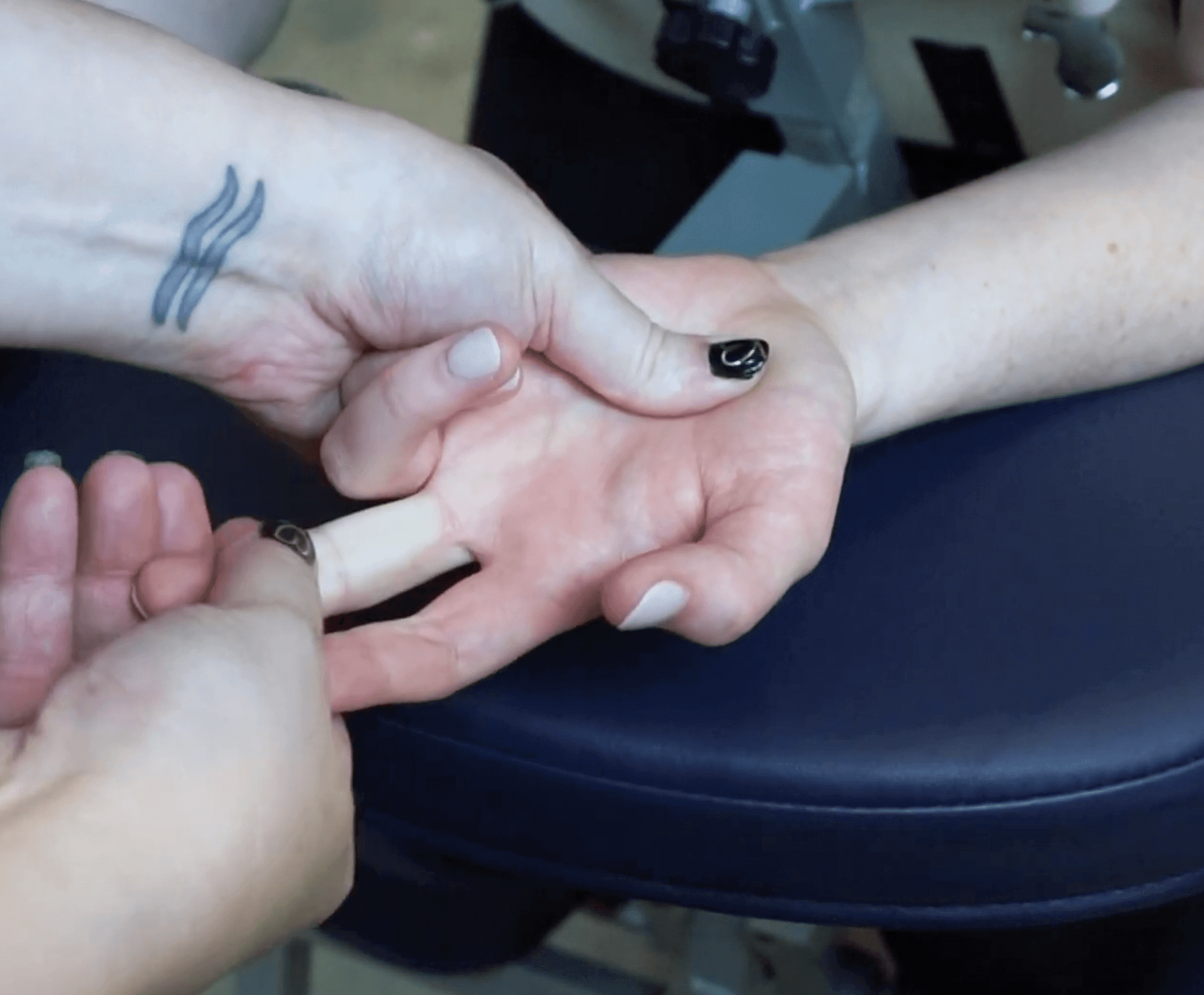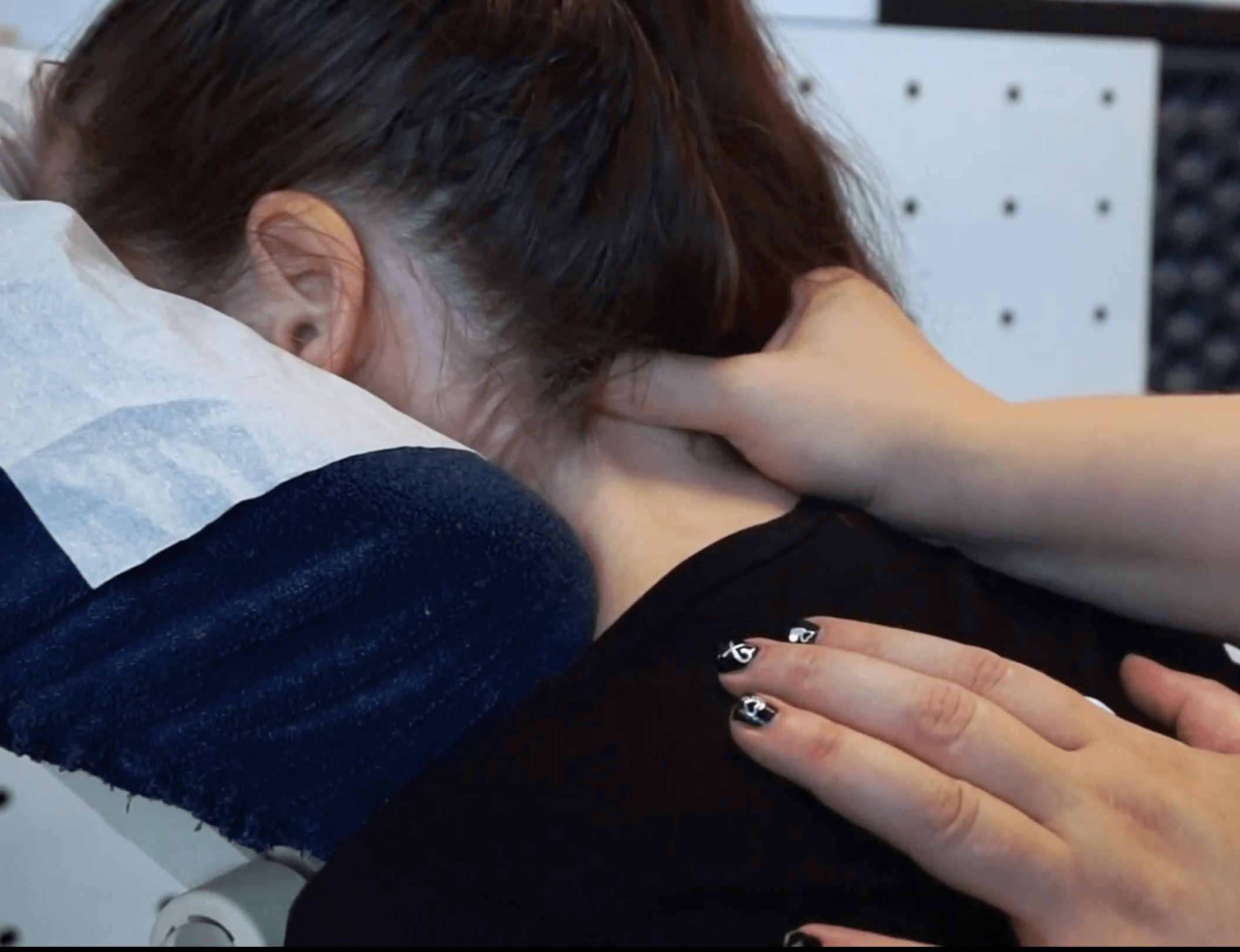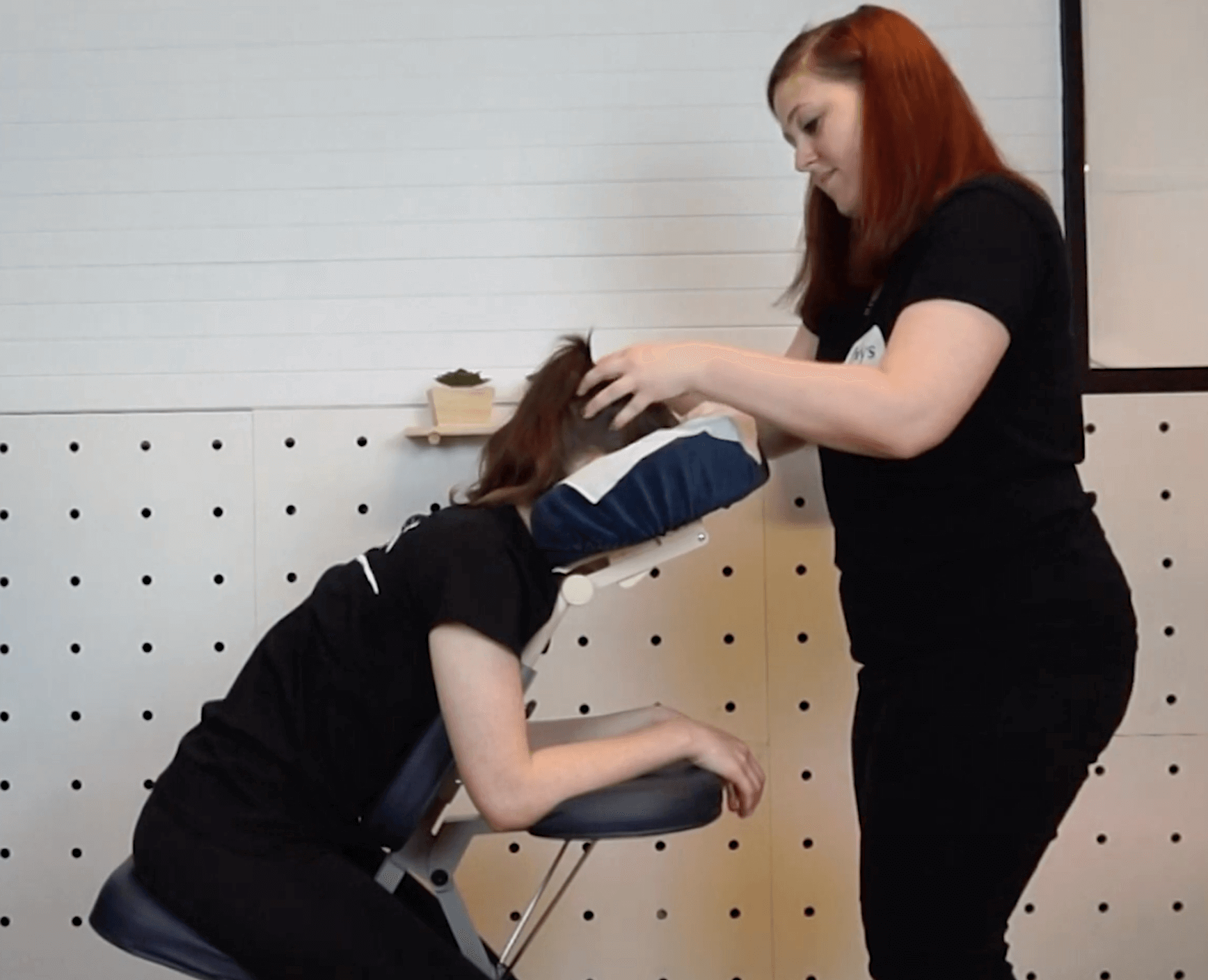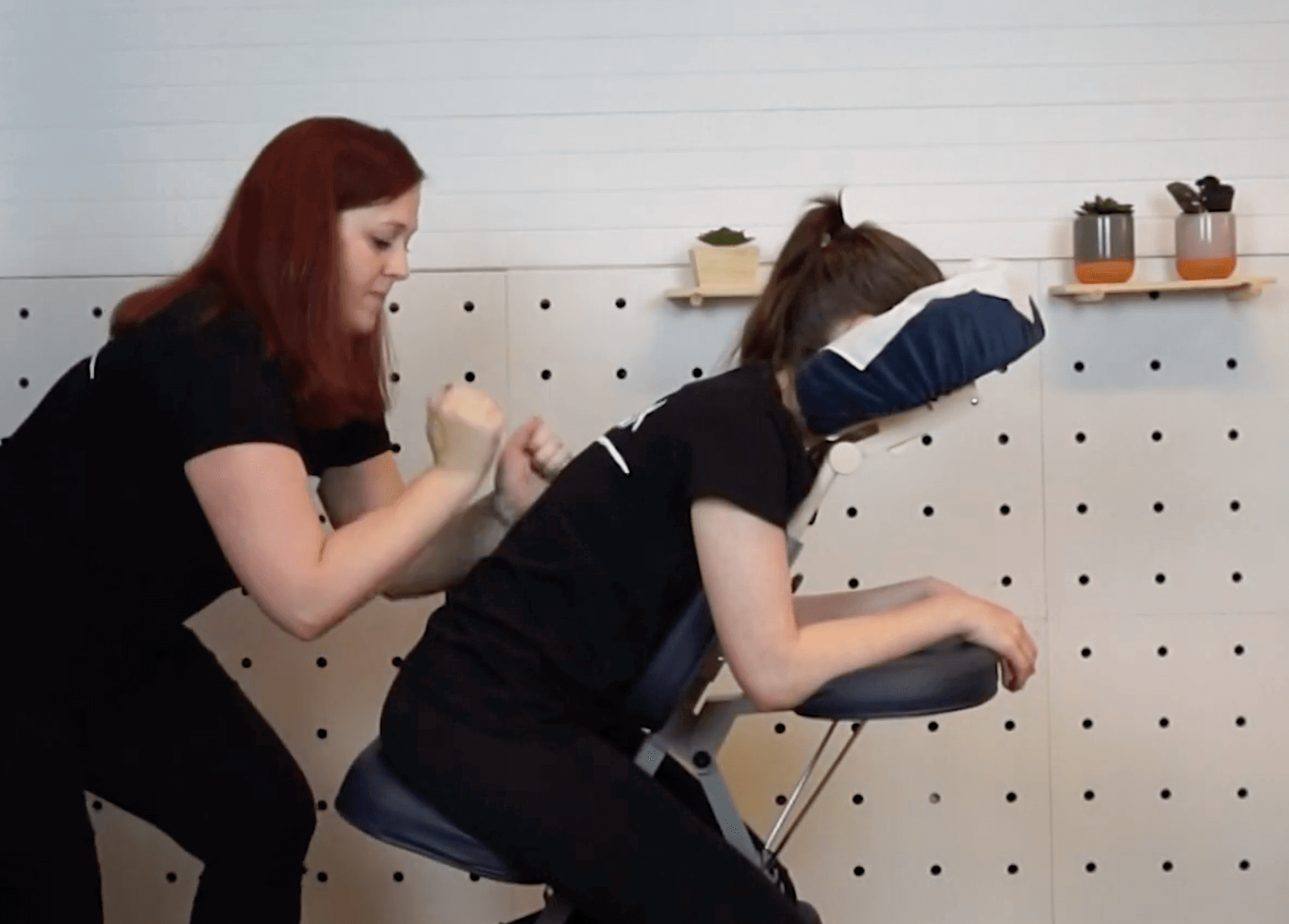The demand for massage in the workplace is on the rise. Employers are starting to realise the benefits of keeping their employees happy and healthy. Scientific studies have demonstrated a positive correlation between massage and stress relief, increased productivity, motivation and improved concentration – and the business world is taking notes.
Learning how to perform a chair massage is a great way for a massage therapist to boost their income. Chair massage is an entire modality in and of itself, and practising it can contribute significantly to their volume of work. We’ve put all the pieces in place for you to start making extra money in your practice by doing corporate chair massage.
What to bring to every corporate chair job
- Professional massage chair
- Disposable face cradle covers or tissues
- Music player/phone
- Headphones (for an open or communal office)
- Portable speaker (for a private office)
- Hand sanitiser
- Disinfectant wipes or spray to clean the chair
- Timer
- Essential oil spray (optional, but a nice bonus)
- Water/caffeine for yourself
How to begin
- Introduce yourself – always politely and professionally.
- Direct client how to sit on the massage chair.
- Be sure to adjust the chair height to suit each person and headrest so that their neck is in a comfortable position – ensure your clients are comfortable.
- Ask the client about injuries, medical conditions, or areas to avoid.
The routine
Keep in mind that the video above is just a basic demonstration that covers the main areas of focus. Each chair massage will follow the same basic structure but should be tailored to address each individual client’s needs. Depending on the allocated time frame, you may choose to omit the less important areas and spend more time on the core areas: the back, neck and shoulders.
For the back
- Introduce touch by wringing trapezius muscles.
- Do compression using the base of your palm doing a half circle twist down the erector spinea.
- Repeat on the opposite side of the back.
- If doing a longer routine, work lower back/QLs with large circles using the base of the palms or closed fists.
- Work your way up back using compression using the base of the palms twisting slightly outwards.
For the shoulders
- Begin with light pinching of the trapezius muscles to assess the problem areas.
- Using a gentle elbow, work your way along the trapezius muscles from the acromion process towards the neck and back, gently trying to address knots.
- Use your elbow to work your way down the rhomboids stopping at the base of the scapula (or continuing all the way down the back if it’s a longer routine).
- Work your way towards the outside of the shoulder blade, hitting some trigger points along the way.
The arms and hands
- Knead down upper arm, really working the deltoid on the way down.
- Use your fingertips to make small circles on the anterior side of the forearm towards the hand.
- Using your thumbs pull and stretch the palm, then do some thumb presses all over the palm.
- Create space between each of the knuckles.
- Spread hand for a nice stretch.
- Isolate each finger, and work your way towards the fingertips.
- Do minor stretches on the back of the hand.
- Finish hand with a gentle wiggle to make sure everything is nice and loose.
- Using your thumb, make small circles along the posterior side of the forearm towards the elbow.
- Knead back up the upper arm.
- Work your way back to wringing of both sides of shoulders.
- Repeat this routine on the other arm.
For the neck
- Once you’ve worked your way back up the other arm and are wringing both shoulders again, proceed to gentle make gentle circles up both sides of the neck with your fingertips using equal pressure on both sides.
- Make small circles up one side of the neck with your thumbs, taking care not to go too far forward.
- Repeat on the other side of the neck.
- Walk to the front of the chair, hook your fingers at the base of the skull and make small circles to work the occipital muscles.
For the head
- Perform a head massage from the front standing position, if time.
Ending the routine
- Work your way back down the neck and back to the wringing of both shoulders.
- Do tapotement.
- Lightly chop along the rhomboids down the erector spinae, down then back up on the same side.
- Repeat on the other side.
- Do pounding with loose fists in the same manor.
- Can also do cupping hands all over back, slowing down slowly.
- Brush the back with light fingertips to signify the end of the massage.
Some reminders
- Sanitize chair after each client.
- Use proper body mechanics to avoid injuring yourself.
- Leave at least one minute at end of each massage to allow for the client to get off of the chair and to get the next one on.
- Stay on schedule. Sometimes they will have a schedule printed for you, sometimes you just have a certain number of minutes for each massage.
Tips from top therapists
Be On Time:
Arrive at the job site at least 20 minutes early for a corporate job. In the corporate world, schedules can be tight and it is very important to ensure we are on time and stay on schedule. Don’t forget to factor in plenty of time to find parking, find the building, deal with a secretary, then get up to the office and set up.
Be Professional
The corporate environment has a nicer dress code, so be sure you dress accordingly. You should never use your phone during a massage. Always have it switched to silent, not vibrate. Don’t eat unless you have a designated break, and eat in an appropriate area away from the client. Do not talk during massage unless responding to the client or asking about pressure. They are there to relax and zone out, not chat.
Be Flexible
Try to be as accommodating of the client’s requests as possible. Set up wherever they ask you. Change the setup location if they wish. Extend the hours if requested and possible.

